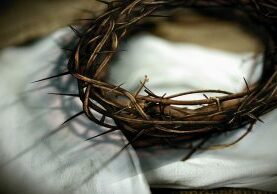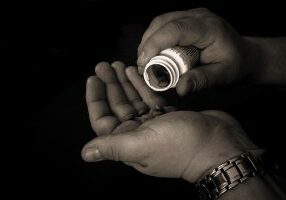Living in the Resurrection: Mortification and Vivification
Ethan+ Harrison

When I think of resurrection life, my impulse is to emphasize the joy, peace and abundance of Christ’s resurrection and forget the cruciform life of discipleship. The tension arises in Christian circles quite frequently: Are we cross people or resurrection people? Thankfully, we don’t have to choose between these two. Instead, I suggest that in Christ’s resurrection life we are cross and resurrection people.
Consider what Gregory of Nazianzus preached in an Easter sermon on the matter: “Yesterday I was crucified with Christ, today I am glorified with him; yesterday I died with him, today I am made alive with him; yesterday I was buried with him, today I rise with him. … Let us become like Christ since Christ also became like us.” (Oration 1.4-5).
St. Augustine notes the difficulty of this daily process of dying and rising, and uses the metaphor of healing to describe it: “This is agony, Lord, have pity on me! It is agony! See, I do not hide my wounds, you are the physician and I am sick; you are merciful, I in need of mercy.” (Confessions, X.28.39).
In these two quotes, Gregory and Augustine follow the contours of Paul’s description of discipleship: It is a life of dying and rising in Christ with the express purpose of becoming holy (Ephesians 4:23-24). Consider how Anglican Theologian John Webster describes this aspect of resurrection life: “This active life of holiness is at every moment characterized by mortification and vivification. As mortification, holiness is the laying aside of that which has been put to death at the cross of the Son of God; as vivification, holiness is the living out of that which has been made alive in the Son’s resurrection.” (Webster, Holiness, 88)
Webster, Gregory and Augustine all testify to this biblical truth: The resurrection life is dying and rising day by day, moment by moment in Jesus Christ.
What does it mean that mortification and vivification are “in Christ”? We must begin by saying Christ’s death and resurrection is the cause of our mortification and vivification (Philippians 2:1-11, Ephesians 4:20-24). When we are baptized into Christ we are brought into union with his death and resurrection through the Holy Spirit (Galatians 2:20-21, Romans 6). In union with Christ, he reckons us righteous and then makes us so; this is the double gift of union with Christ: justification and sanctification. And it is in this context that mortification and vivification occur. Christ’s humiliation and exaltation become the means and ends of Christian existence (Philippians 2:1-11). In Christ, through the power of the Holy Spirit, God puts to death our flesh and raises us up to new life.
How then do we live the resurrection life today? Trust, surrender and discipline. We must trust in God’s loving providence as he works in our daily life circumstances to mortify the habits of the flesh and vivify us to new life (Galatians 5:16-25). As we learn to trust, we surrender daily to Christ’s revealed will moment by moment. We keep our minds on the things above, putting off what is earthly and putting on what is heavenly (Colossians 3:1-17). Finally, we discipline our minds, hearts and hands, in virtue-forming habits, as Christ, our physician, slowly purges our festering wounds and heals us with his infinite life.
Christianity isn’t a choice between the cross or resurrection; it is both in Jesus Christ. Mortification and vivification is our resurrection life until all death is killed and eternal life is ours in the light of the Resurrected One.

Ethan+ Harrison formerly served as associate priest at Immanuel Anglican Church in Destin, Florida. He graduated from Trinity School for Ministry with his Master of Divinity and Master of Sacred Theology in Systematic Theology. He is passionate about theology, evangelistic discipleship and seeing all of life in light of Christ and his gospel. He spends time with his wife, Lindsay, and daughters, Maren and Lisette, as they adventure outside, go bouldering and cook at home.
Category: Celebrate, Faith Formation










